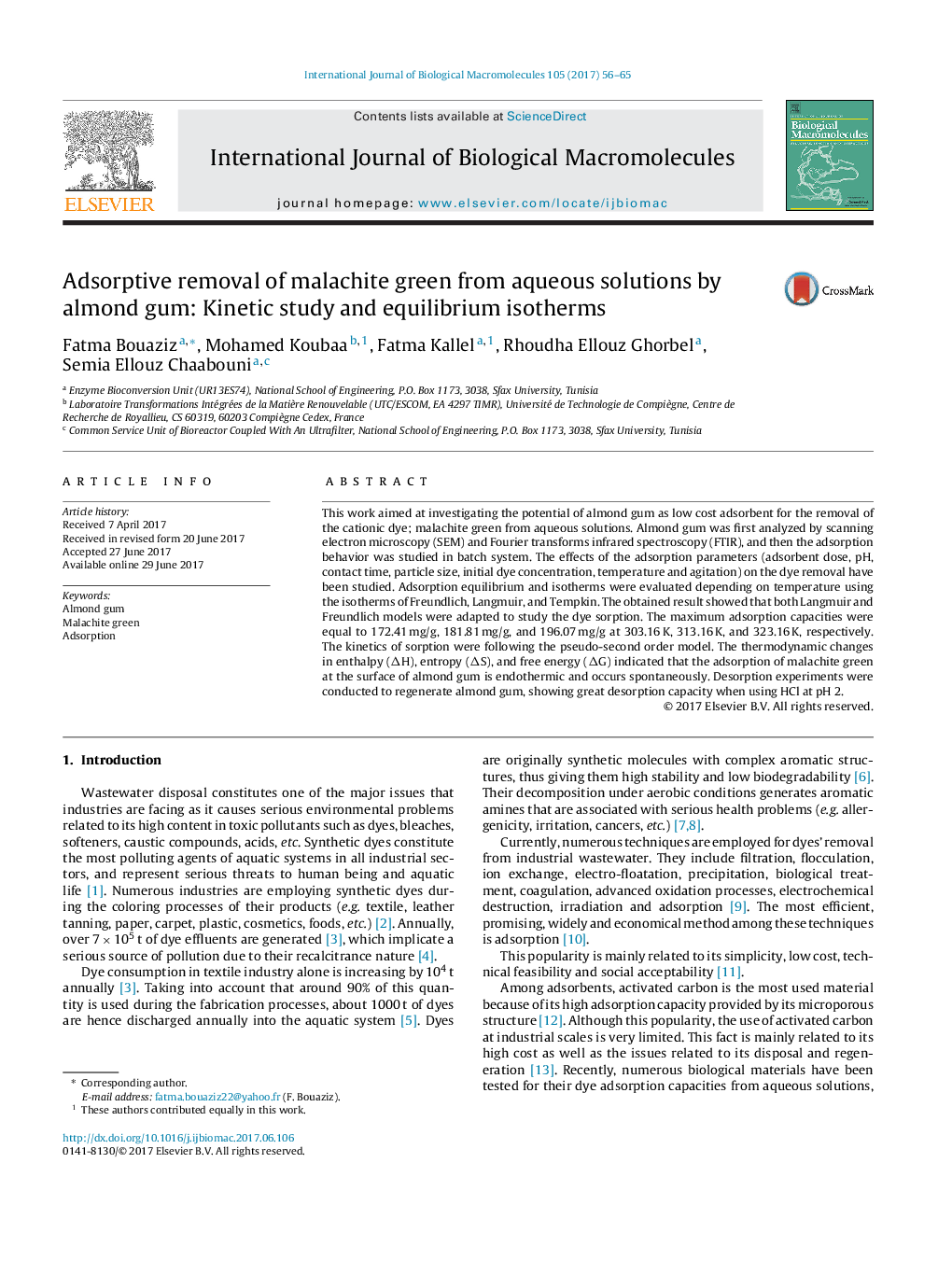| Article ID | Journal | Published Year | Pages | File Type |
|---|---|---|---|---|
| 8329290 | International Journal of Biological Macromolecules | 2017 | 10 Pages |
Abstract
This work aimed at investigating the potential of almond gum as low cost adsorbent for the removal of the cationic dye; malachite green from aqueous solutions. Almond gum was first analyzed by scanning electron microscopy (SEM) and Fourier transforms infrared spectroscopy (FTIR), and then the adsorption behavior was studied in batch system. The effects of the adsorption parameters (adsorbent dose, pH, contact time, particle size, initial dye concentration, temperature and agitation) on the dye removal have been studied. Adsorption equilibrium and isotherms were evaluated depending on temperature using the isotherms of Freundlich, Langmuir, and Tempkin. The obtained result showed that both Langmuir and Freundlich models were adapted to study the dye sorption. The maximum adsorption capacities were equal to 172.41Â mg/g, 181.81Â mg/g, and 196.07Â mg/g at 303.16Â K, 313.16Â K, and 323.16Â K, respectively. The kinetics of sorption were following the pseudo-second order model. The thermodynamic changes in enthalpy (ÎH), entropy (ÎS), and free energy (ÎG) indicated that the adsorption of malachite green at the surface of almond gum is endothermic and occurs spontaneously. Desorption experiments were conducted to regenerate almond gum, showing great desorption capacity when using HCl at pH 2.
Keywords
Related Topics
Life Sciences
Biochemistry, Genetics and Molecular Biology
Biochemistry
Authors
Fatma Bouaziz, Mohamed Koubaa, Fatma Kallel, Rhoudha Ellouz Ghorbel, Semia Ellouz Chaabouni,
